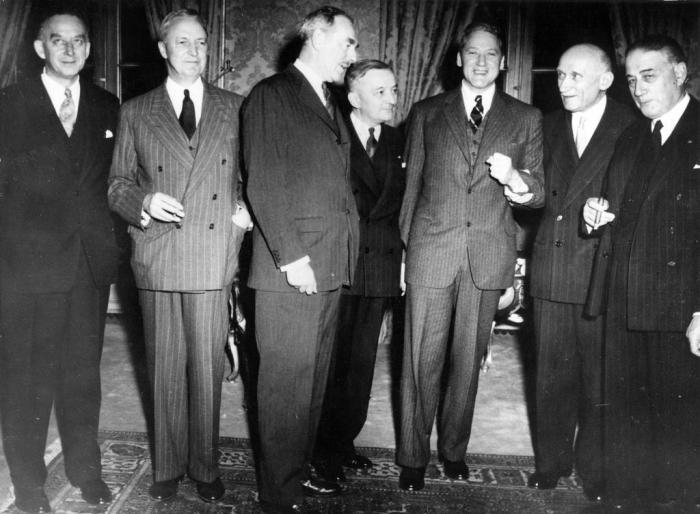Since he has taken office, President Trump has consistently alienated our NATO allies and the EU. As such, the next President will have a lot of work to do to repair transatlantic relations. To that end, here are some possible ideas for rapprochement.
Speech in Berlin or Brussels
Once the Democratic nominee is official after the July 2020 convention, they should begin preparing to make a speech in Europe, preferably in Berlin or Brussels. The speech should not just reiterate the history and importance of transatlantic relations; it should also promote new opportunities for cooperation.
Berlin is an obvious choice because of Germany’s influence in European affairs. Barack Obama spoke there in July 2008 before he was elected, and in regards to transatlantic relations, said “Partnership and cooperation among nations is not a choice; it is the one way, the only way, to protect our common security and advance our common humanity.” Additionally, Germany takes over the presidency of the Council of the EU on July 1, 2020, and will hold it until Dec 31, 2020, and so a speech in Berlin might be a way to talk about the importance of the EU.
Brussels also makes sense since it is home to NATO and the capital of the EU. Given the prominent role the US plays in NATO, it would be a good place to reassure our allies we stand with them. As for the EU, the US has a long history of supporting European integration, and it is a crucial partner for the US in terms of trade and investment.
Climate Change
Ursula von der Leyen has made it quite clear that climate change is at the top of the Commission’s agenda. The goal of the newly established European Green Deal is to make the EU climate neutral by 2050. Additionally, Europe is home to some of the most sustainable cities and communities, e.g. Amsterdam, Copenhagen, Helsingborg, and Stockholm. Denmark has even appointed a climate ambassador. Since both Joe Biden and Bernie Sanders have pledged to have the US rejoin the Paris Agreement, taking action to protect the climate is an area where the US and Europe can collaborate.
Gender Equality
In addition to the European Green Deal, the Commission has also established a Gender Equality Strategy. According to the Commission’s website, “The goal is a Union where women and men, girls and boys, in all their diversity, are free to pursue their chosen path in life, have equal opportunities to thrive, and can equally participate in and lead our European society” (bold in original). Sweden also has the world’s first feminist foreign policy. Finally, the Nordic countries “continually rank high among the best countries to be a woman.” This is an area where the US could not just collaborate, but also learn from its European partners.
Sustainable Development Goals
According to the Commission’s website for the SDG’s, “The EU has committed to implement the Sustainable Development Goals both in its internal and external policies.” This was especially evident when I was in Brussels June 2019. Every meeting we had at an EU body mentioned or discussed at length what they were doing for the SDG’s. It was almost a matter of pride. Here in the US, on the other hand, we rarely, if ever, hear about the SDG’s in political discourse. If the US is going to rejoin the Paris Agreement, then it it makes sense to also work towards the 2030 Agenda.
Development
The EU is a global leader in development aid to countries around the world. Looking at Official Development Assistance (ODA) alone, the five countries in 2018 that met the target of .7% of GNI towards ODA were all European. The US, on the other hand, fell quite short of the target. Foreign aid is important for a number of reasons: it’s the morally right thing to do; helping others helps us; and aid plays a crucial role in lifting people out of poverty and improving healthcare, among other aspects of quality of life. Additionally, helping other countries become more stable economically helps with their political stability, which can help address issues like conflict, migration, and terrorism.
Trade
Trade is one of the pillars upon which transatlantic relations have been built. According to the US Trade Representative, “The EU countries, together, would rank 1st as an export market for the United States in 2018.” Under President Obama, the US and EU were in talks regarding the Transatlantic Trade and Investment Partnership (TTIP); however, under President Trump, the US has imposed billions of dollars in tariffs on the EU, while the EU has imposed over $2 billion in tariffs on the US. Given that the EU has trade agreements with countries including Australia, Canada, Japan, and Mexico, it is time to work on one for the US. Besides the obvious economic benefits for both sides, an agreement will help in dealing with China.
Conclusion
These are but some of the many areas in which the US can cooperate with our European partners. In addition to these issues, both sides should work together to address the problems posed by countries such as China and Russia. Finally, while continuing to work on the two historic pillars of transatlantic relations, trade and security, collaborating on the above issues can usher in a new era of peace, prosperity, and progress.


